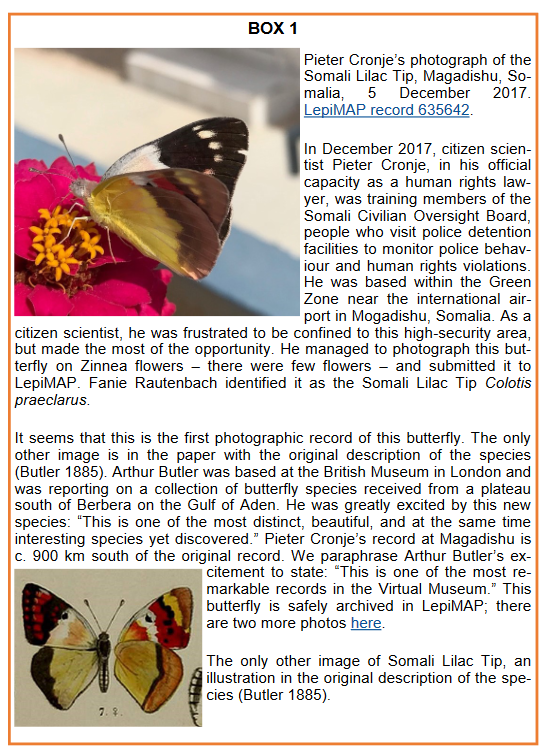The Virtual Museum is a database containing a collection of photographs with information relevant to each photograph. This kind of information is called metadata. The core components of the metadata for each record consist of the date of observation, the coordinates of the place where the photographs were taken, the species and the observer. Each record has up to three photographs. The website is at https://vmus.adu.org.za.
The Virtual Museum is in contrast to a real museum. The real museum has shelves and draws filled with specimens, a preserved form of a real animal. The specimen could be a skin, for a bird, or a snake in a bottle of alcohol, for the reptile collection. In the Virtual Museum, the specimens, dead animals, are replaced with photographs, usually of live animals (but there are lots of photographs of squashed snakes and bundles of mammal fur).
Unlike the specimen records in the real museum, the photographic records in the Virtual Museum do not lose colour nor shrink, as museum specimens do. But the real museum is not all negatives! We cannot use a photograph to obtain tissue needed for a DNA analysis. Thus, the photographic records in the Virtual Museum do not replace the historical specimens in the real museum, but rather complement them by being able to capture additional context such as habitat and behaviour.
The Virtual Museum administered by the Biodiversity and Development Institute was started in 2005 for the reptile atlas in Eswatini, Lesotho and South Africa. By 2024 it had assembled about 2.2 million records of biodiversity distribution. There is an Open Access paper in the journal Biodiversity Observations that describes its history and development. By 2023, there were 30 scientific papers that had made use of the data from the Virtual Museum.There is a list of them in the paper.

Many of the photographs in the Virtual Museum show not only the object of interest, but also the context. For example, in the background to most of the photographs, you can see the habitat that a species uses. This contrasts with the real museum, where the specimen is entirely removed from its habitat. Of course, a lot of records just have blue sky in the background, and many have been cropped so tightly that only the animal or plant is visible.

